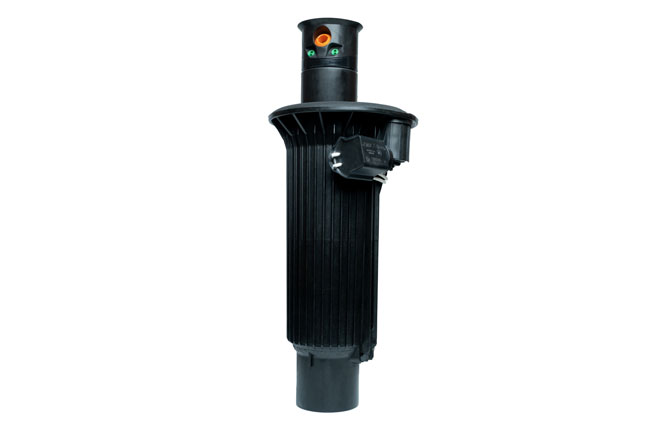How to keep irrigation systems running all season long

Brad Jakubowski
Brad Jakubowski, irrigation technician and instructor at Penn State University, shares tips to keep irrigation systems running smoothly and effectively during peak times.
To ensure their irrigation systems continue to operate throughout the busy time(s) of the year, Jakubowski advises superintendents to be proactive.
For example, superintendents can prevent many potential issues through scheduled maintenance and monitoring, whether it’s occurring daily, monthly or semi-annually. Jakubowski says superintendents should encourage staff members — from mowers to those overseeing course setup — to take note of specific issues (preferably every day, but especially on Fridays), including dry and wet spots.
Employees should take cell phone photos of the exact problems they encounter on the course to create a database featuring items to track, monitor, prioritize and fix. And, of equal importance, take advantage of the latest drone technology to note exact issues from above their course.
“Just as the captain of a ship should know every bolt and weld of their vessel, the person in charge of irrigation (and/ or the superintendent) should also know the lifeblood of their irrigation system,” Jakubowski says. “Know which heads and brands you have, along with their delivery characteristics, the types of pipes they have and the ages of their parts.”
Additionally, superintendents must have up-to-date as-built diagrams of their irrigation systems. Since many courses use two-wire systems, these as-builts should also include detailed wiring diagrams within the diagrams and information about where every wire splice is.
Superintendents can also minimize system downtime by anticipating potential problems and having access to knowledge of as many parts and materials as possible.
“Make sure everyone is speaking the same language when it comes to ordering parts for stocking purposes, as well as immediate repairs,” he says. “As an example of the significance of preparing for issues ahead of time, a single missing reducer bushing could hold up a repair for days or longer, versus having it accomplished immediately.”

Carl Eberts
Hunter Industries
Carl Eberts
Category manager, golf
Superintendents should evaluate how much time they’re spending on irrigation management. To better manage the complexities of flow balancing and scheduling, among all their other responsibilities, they should develop a proposal to adopt a central control platform that allows them to make reliable, automatic runtime adjustments with a few clicks. If they are not equipped with the future-ready tools they need to keep irrigation running smoothly in the background where it belongs, it’s time to consider upgrading. They should also track how much they’re spending on labor to make irrigation repairs and monitor the resources their irrigation system is consuming. By weighing the labor spent on repairing legacy systems against the potential water and electricity savings from improved distribution uniformity with a new system, they can determine a clear return on investment for upgrading to the latest golf rotor and control system technology.

Jason Habeck
Toro
Jason Habeck, CGCS
Technical sales manager
Always be proactive, not reactive, when it comes to your irrigation system. Keep these tips in mind to ensure the most ex- pensive piece of equipment at your facility receives proper attention. Monitor it: Perform audits and test the system; watch it run at night under real-life conditions. Update central control: When you physically change nozzles, arcs or entire sprinklers, update the central control computer. Fine-tune it: Monitor moisture levels, adjust the entire system and fine-tune individual stations daily, based on moisture requirements. Routine maintenance: Don’t wait for the system or turf to tell you there’s a problem. Schedule regular maintenance checks and audits. Identify sprinklers that aren’t properly adjusted, not rotating, have debris in the nozzles, have poor pressure, are not level or are not functioning before they become a problem. Inspect inventory: Check your parts inventory monthly and ensure common items are on hand. This is especially important as supply chain issues continue to impact most markets. Start early: If weather allows, start your system early and pressurize the system slowly so it’s ready.

Jim Spindler
Ecologel Solutions
Jim Spindler, CPAG, CCA CSS
Director of agronomy
Irrigation is critical to golf course maintenance, but, unfortunately, sometimes even the most well-maintained systems fail. Having a plan and the right products to protect the turf during failures will reduce stress for both you and the turf. Hygroscopic humectant products, such as Hydretain or LESCO Moisture Manager, protect turf from drought stress during extended power outages or equipment breakdowns. Hygroscopic humectants condense the water vapor in the soil back into water droplets, making it available to plant roots. This process provides roots with moisture after the soil has begun to dry. Not only do hygroscopic humectants protect turf during emergencies, but they can also be part of a regular maintenance program to decrease the watering frequency, thus reducing irrigation system component wear and energy use. Furthermore, recent research shows that hygroscopic humectants increase nutrient uptake, helping to reduce fertigation requirements.

Tony Whelan
Rain Bird
Tony Whelan
National sales manager
Superintendents can ensure that their irrigation system is operating efficiently during peak season by setting themselves up for success during the off-season. Conduct irrigation audits and nozzle exchanges and repairs ahead of busy times — while also properly documenting any updates in their computer central control database — makes all the difference. Skipping the step of updating their records can negatively impact the system’s efficiency very quickly. It’s also hugely helpful to leverage soil and environmental data when optimizing an irrigation system. These data points often hold clues to effective water penetration and seasonal and regional conditions that impact irrigation needs. Finally, innovations in mobile-first irrigation management are bringing superintendents out of the back office and onto the course. The upcoming CirrusPRO irrigation system from Rain Bird allows them to make real-time adjustments and troubleshoot issues and water more efficiently right from the field, using their mobile devices.












